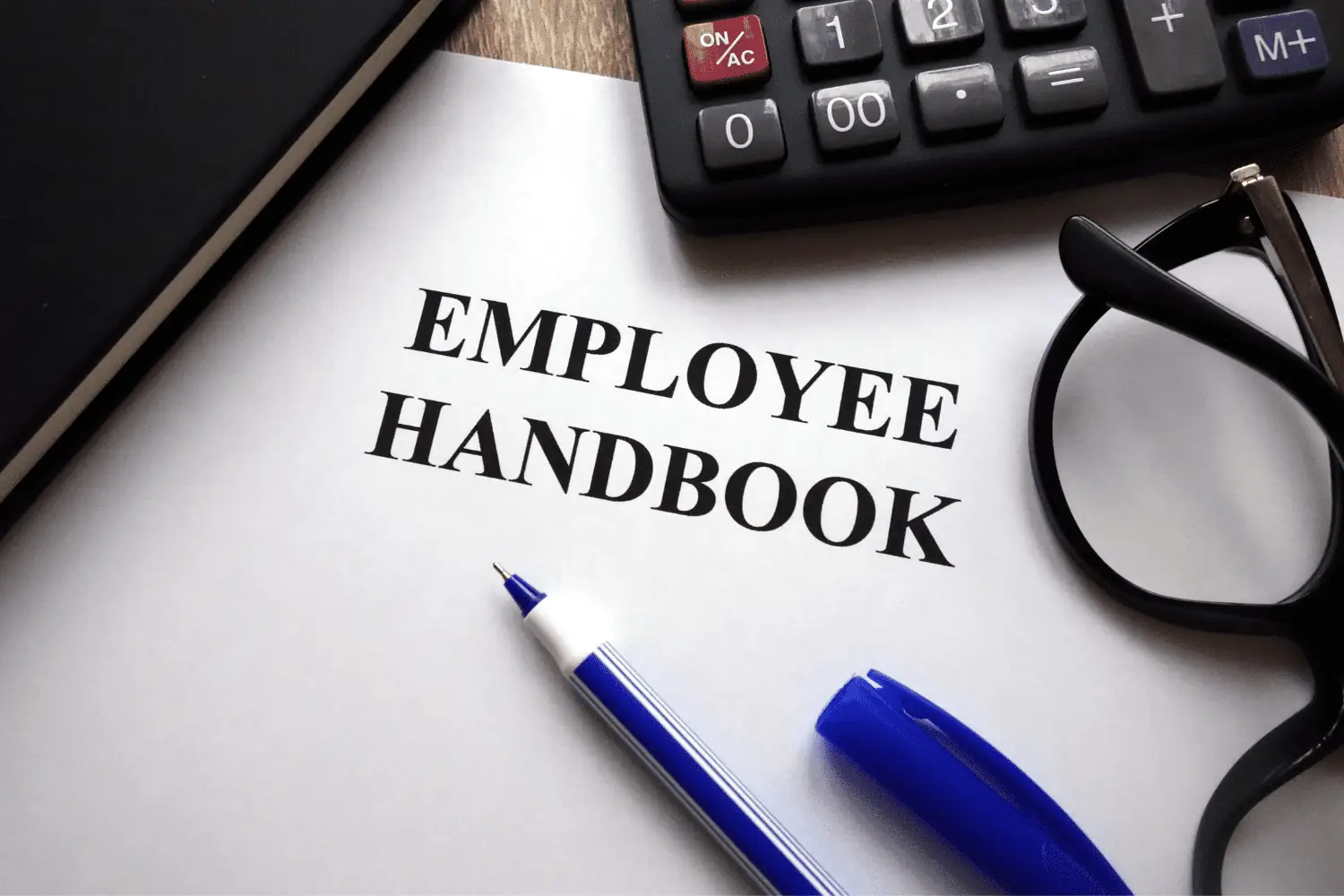Tips for Upper Management Creating an Employee Handbook

An employee handbook is a powerful tool that every business will need to ensure compliance, improve the onboarding and performance of employees, reduce the company risk and exposure, and create a robust company culture. Here are four tips for senior company management to use when creating or updating the content and policy of its company handbook for their team.

1. Work with an HR services provider to get tips and expertise for an employment handbook that’s fully in compliance.
A business benefits greatly by choosing to work with HR experts as its managers are writing the company handbook for the team. HR experts can offer information and guidance, as well as the latest updates a business may need to ensure its policies and its employee handbook are in compliance with all local, state, and federal laws. A company can also get help and tips for dealing with complicated circumstances, like a business with a team and offices in many states and differing HR and legal requirements. Another example of a complicated circumstance for creating an employee handbook is when a business has employees who do vastly different work. In this situation, a business must ensure they take the time to make different policies in its employee handbook that are applicable to the different kinds of employees.
2. Make an audit of where all remote workers on the team are located.
A business benefits when it performs an audit of where all remote employees live and work before it takes time to update its employee handbook and policy. A company is responsible for the compliance of its employee handbook and policy in every location where its employees work. If a business is headquartered in one state, but remote employees live (and thus work) in other states, the employee handbook and its policies must comply with the HR and legal employment requirements of all states where its team of employees are working from. Sometimes, state (and even city) requirements may force a company to take time to make new policies that are vastly different for its team of employees. In some cases, an employer actually benefits from creating a different employee handbook with different content and policies for the different locations its employees and team live in.
3. Keep the handbook updated as the business hires or loses significant amounts of employees.
As a business hires more employees or as it gets smaller, it should ensure that its employee handbook and policy stays in compliance. Sometimes a company may grow enough to be subject to new laws and requirements, necessitating changes or additions to the policies in its employee handbook. A business often benefits from working with an HR services provider like MP, who will work with management to help ensure that the employee handbook and every policy is in compliance based on the company’s size. Management may want to repeat this process every time its team of employees grows or shrinks significantly. Another option is to repeat the process every year.
4. Update the employee handbook yearly to make sure the business includes any new policies required on a federal, state, city, or industry-wide level.
To ensure its handbook and employee policy is in compliance, a company and its HR employees should make an audit of every policy around the same time each year. Many new laws that affect employment topics such as access to benefits, harassment, onboarding, training, management, and more, come into effect around July or August. Frequently, an employer benefits from working with an HR expert, such as the ones from MP, who stay updated on the latest information and news that will make an impact on employment policy and a company handbook for employees.
Recent Employee Handbook Posts
Recent Posts
- Building a High-Impact Leadership Development Strategy: A Step-by-Step Guide
- Why Leadership Training Matters in 2025 and Beyond
- The Real Reason Your New Hires Quit (And How to Fix It with Smarter Onboarding) – Zip Drive INCLUDED
- Learn & Grow: The Learning Management System for Employee Engagement and Retention
- From Attic to Innovation: Jason Maxwell’s HR Leadership Journey
Categories
- ACA (10)
- AI (6)
- BizFeed (6)
- Business Strategy (119)
- COBRA (5)
- Compliance (202)
- COVID-19 (92)
- Diversity (12)
- eBooks (19)
- Employee Engagement (33)
- Employee Handbooks (24)
- ERTC (29)
- FFCRA (7)
- HR (306)
- MP Insider (13)
- Payroll (122)
- PFML (9)
- PPP (24)
- PTO (5)
- Recruiting (53)
- Remote Work (39)
- Return to Work (32)
- Unemployment (1)
- Wellness (22)
Archives
- May 2025
- April 2025
- March 2025
- February 2025
- January 2025
- December 2024
- November 2024
- October 2024
- September 2024
- August 2024
- July 2024
- June 2024
- May 2024
- April 2024
- March 2024
- February 2024
- January 2024
- December 2023
- November 2023
- October 2023
- July 2023
- June 2023
- May 2023
- April 2023
- March 2023
- January 2023
- December 2022
- October 2022
- September 2022
- August 2022
- July 2022
- June 2022
- May 2022
- April 2022
- March 2022
- February 2022
- January 2022
- December 2021
- November 2021
- October 2021
- September 2021
- August 2021
- July 2021
- June 2021
- May 2021
- April 2021
- March 2021
- February 2021
- January 2021
- December 2020
- November 2020
- October 2020
- September 2020
- August 2020
- July 2020
- June 2020
- May 2020
- April 2020
- March 2020



